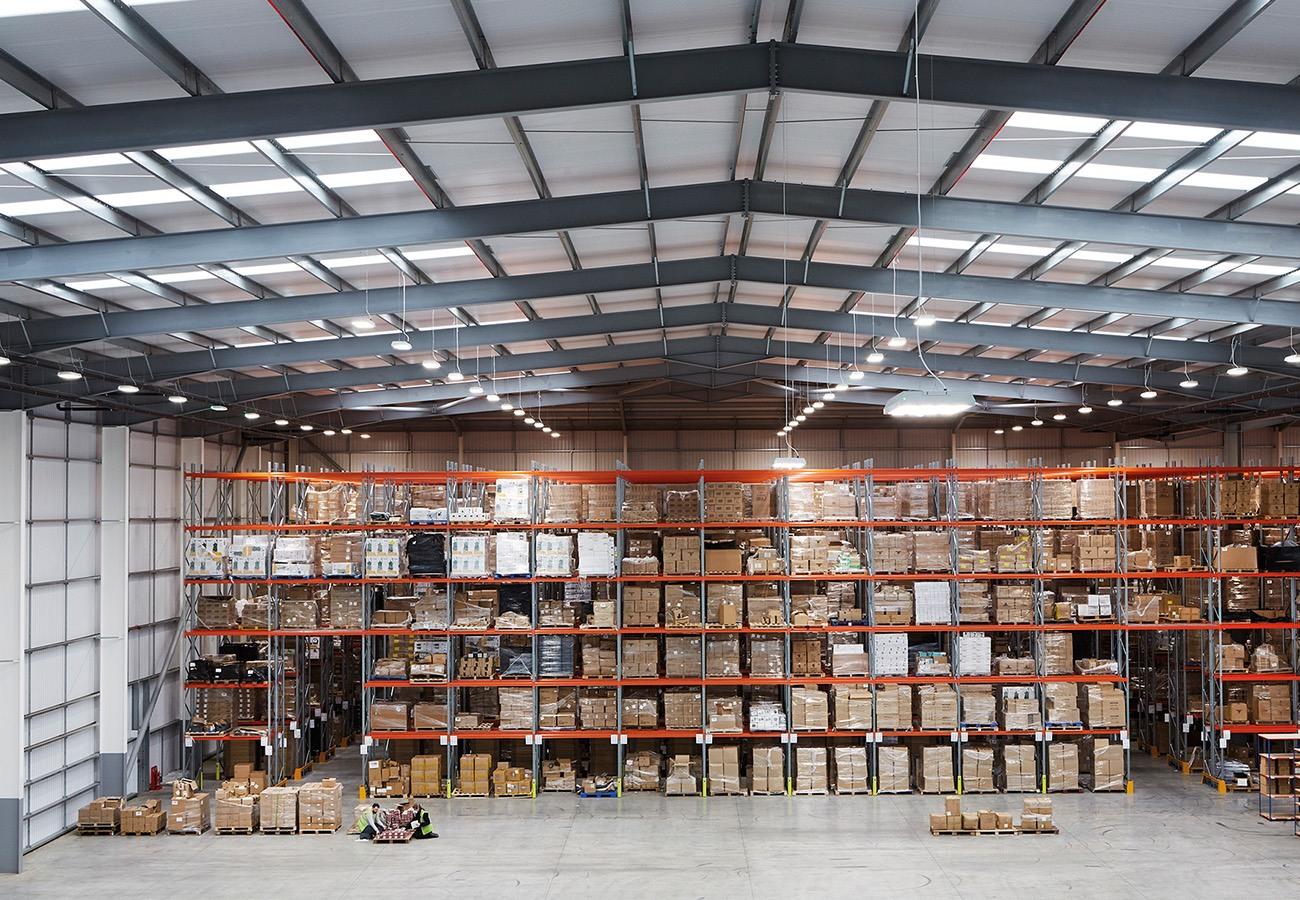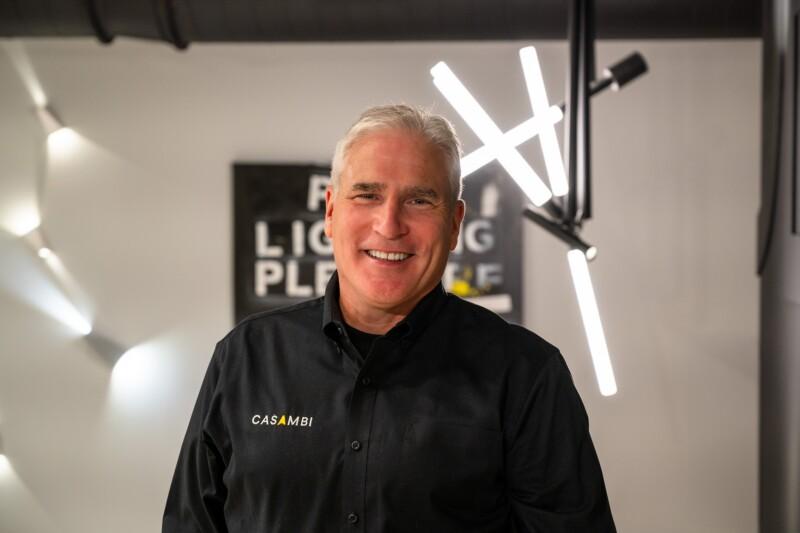Wireless LED lighting boosts warehouse efficiency

In a bid to optimize costs, it’s customary to zone in on manufacturing cost-cutting, rather than analyzing the use of the space itself. And lighting is nearly always an after-afterthought. Yet, there’s just so much to be gained from a lighting strategy revamp.
As the global energy crisis continues, manufacturing and warehousing are bearing the brunt of soaring electricity bills. This is further compounding pre-existing pressure on companies to make their buildings more energy-efficient in alignment with aggressive national net-zero carbon targets. In some severe cases, the current situation poses a significant existential threat to business.
In the UK, the operation of buildings accounts for around 30% of emissions, mainly from heating, cooling, and electricity use. And in a typical warehouse, electrical costs can account for up to 40% of its operating budget. One component factoring into this is lighting, which is responsible for a high proportion of energy consumption (bearing in mind that lighting is needed for round-the-clock operations).
In a bid to optimize spending, it’s customary to zone in on manufacturing cost-cutting, rather than analyzing the use of the space itself. And lighting is nearly always an after-afterthought. Yet, there’s just so much to be gained from a lighting strategy revamp.
I deeply understand the reluctance to undergo a lighting refurbishment. The fitting and maintenance of warehouse lighting can be expensive, and oftentimes requires specialized equipment such as cherry pickers to install or change it whenever failures occur – much to the detriment of vital unceasing activities. Although quality lighting can entail a higher upfront cost, selecting cheaper options amounts to a false economy since they will only lead to additional costs later down the line. Here’s why.
Generally, old, power-hungry, and ineffective fluorescents and 400W metal halide high bays are used for lighting. They’re installed in such a generic, blanket-coverage way that doesn’t consider the individual illumination needs of the workforce. Bad, inadequate lighting poses significant health and safety risks.
A combination of high energy usage/costs through aging fittings, along with long operational hours and areas of infrequent use makes for an excellent commercial business case that far surpasses the customer’s requirements.
Switching to LEDs is absolutely the way to go. LEDs yield energy savings of up to 60-70% by firstly, producing more lumens per watt (LPW). And LEDs distribute light more uniformly requiring fewer lumens to meet lighting requirements in a given space. Because LED lamps typically last up to 15 years (as opposed to the fluorescents’ 3-5yr lifespan) and there are no consumables to replace (ie. bulbs, photocells, etc) maintenance costs are reduced as are the number of accidents.
A tailored solution can be expensive, so Aurora Lighting offers finance to spread the costs. Coupled with energy savings from less efficient lighting replacement, an end client is likely to be cash positive from day 1.We work alongside our clients to ensure design, controls, and products are combined to significantly reduce energy costs and meet or exceed ROI expectations. We offer our 0% Finance program for projects to commence without upfront costs. This allows clients to spend the CAPEX on other business investments.
The total cost of ownership for LED lighting averages out the cost to run lighting over a period. Changing light sources to LEDs in warehouse high bays results in significant energy savings, including the costs of products and installation. When wireless controls and sensors are added, an additional 40% can be added to that savings equation.
Aurora’s smart lighting, sensing, and control platform, based on Casambi technology, offers simple installation and commissioning. Wireless luminaires are installed without the need for pulling wires across the space. Mesh networking of connected luminaires and sensors enables easy remote grouping and configuration, with immediate and significant energy savings through daylight harvesting and occupancy-based control. This ensures the most efficient use of energy to provide the correct amount of autonomous light when and where it is needed. The costs of new luminaires and installation could be covered by money saved on energy bills, while improved workforce safety and welfare are… well… priceless.
This blog post was written by Mark Russell, Sales Director UK Projects at Aurora Lighting. Mark attended the 2022 Casambi Summit, where he presented one of his many successful industrial lighting projects. Please watch his presentation to reap the benefits of his decades-long experience in the construction and lighting sectors.
Interested in learning more about Casambi? Drop us a note, and we’ll reach out to you:



